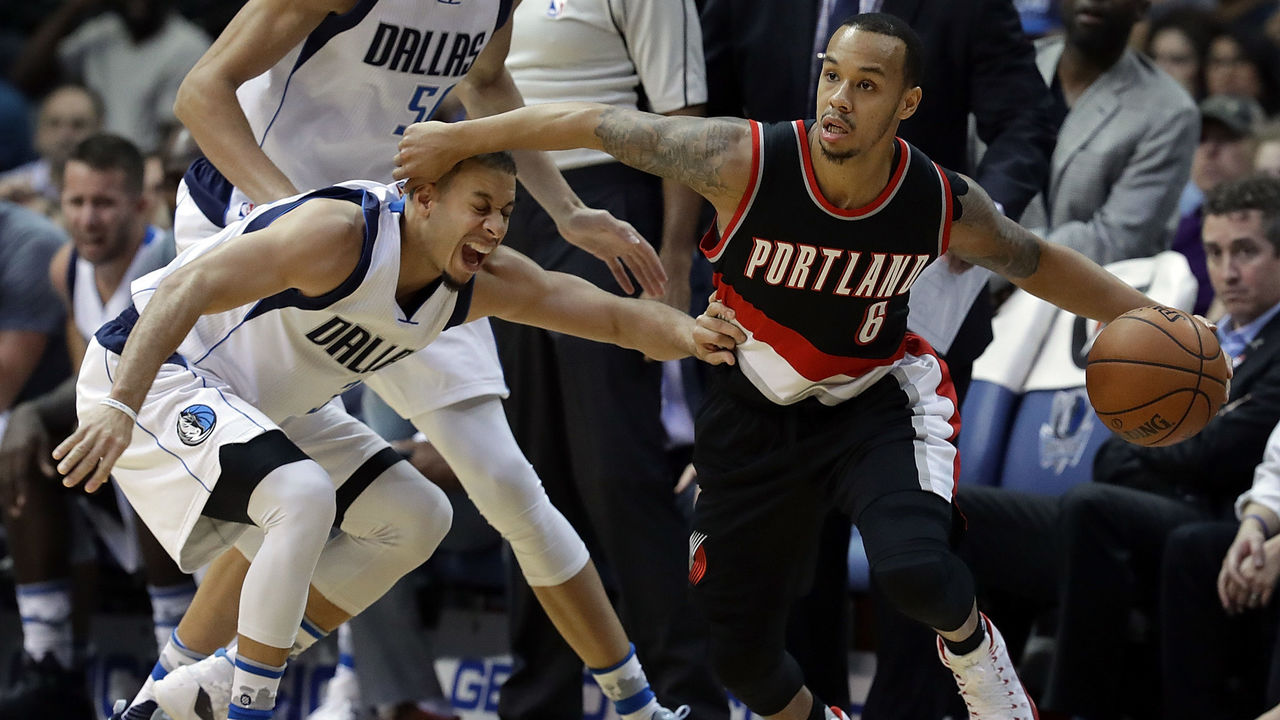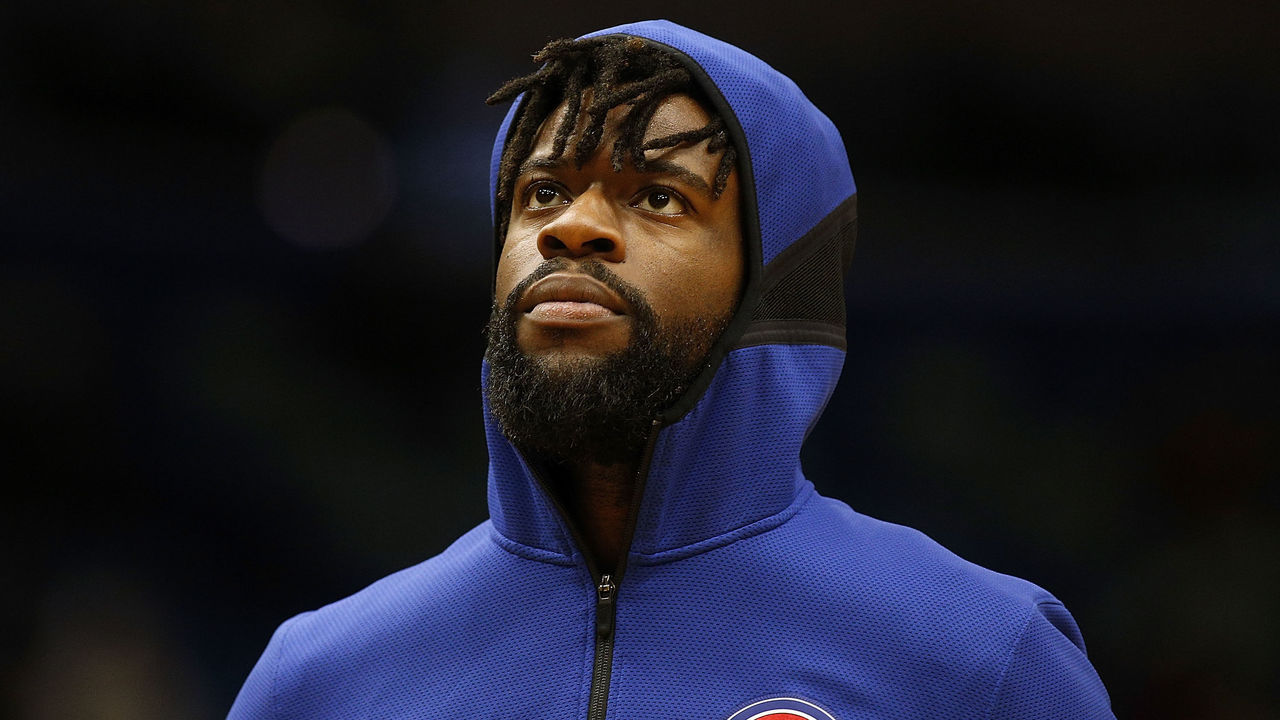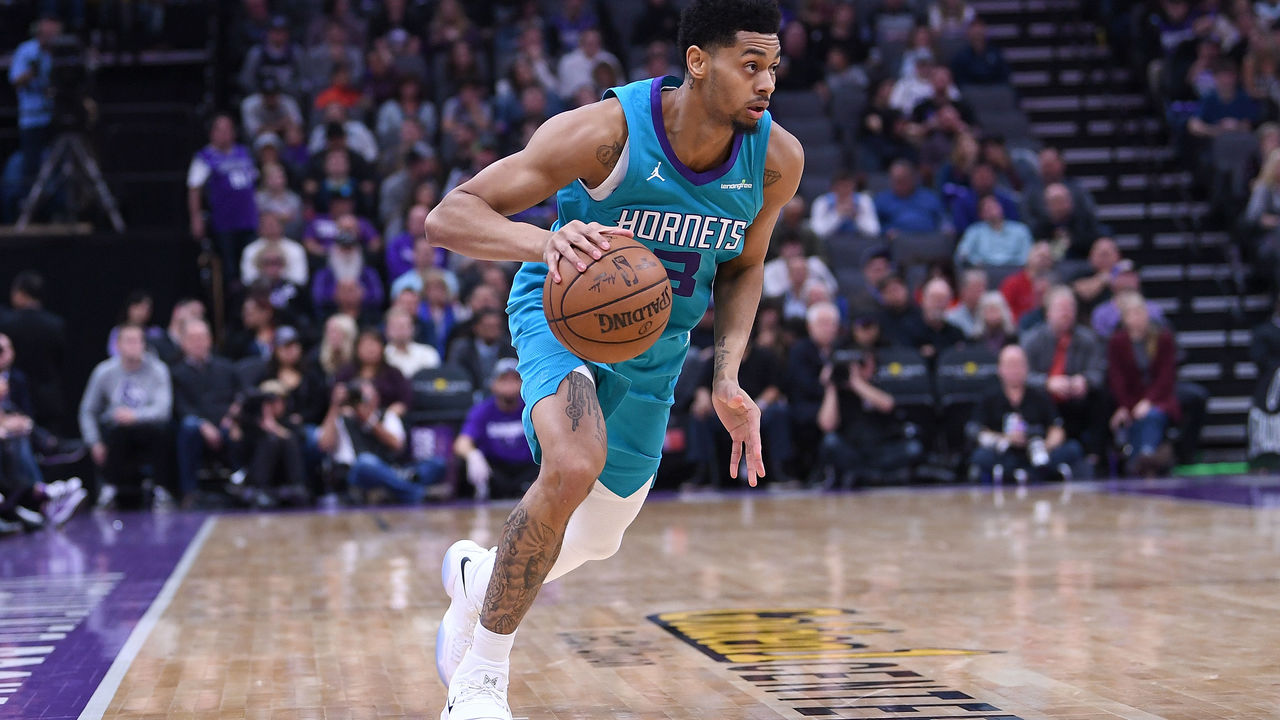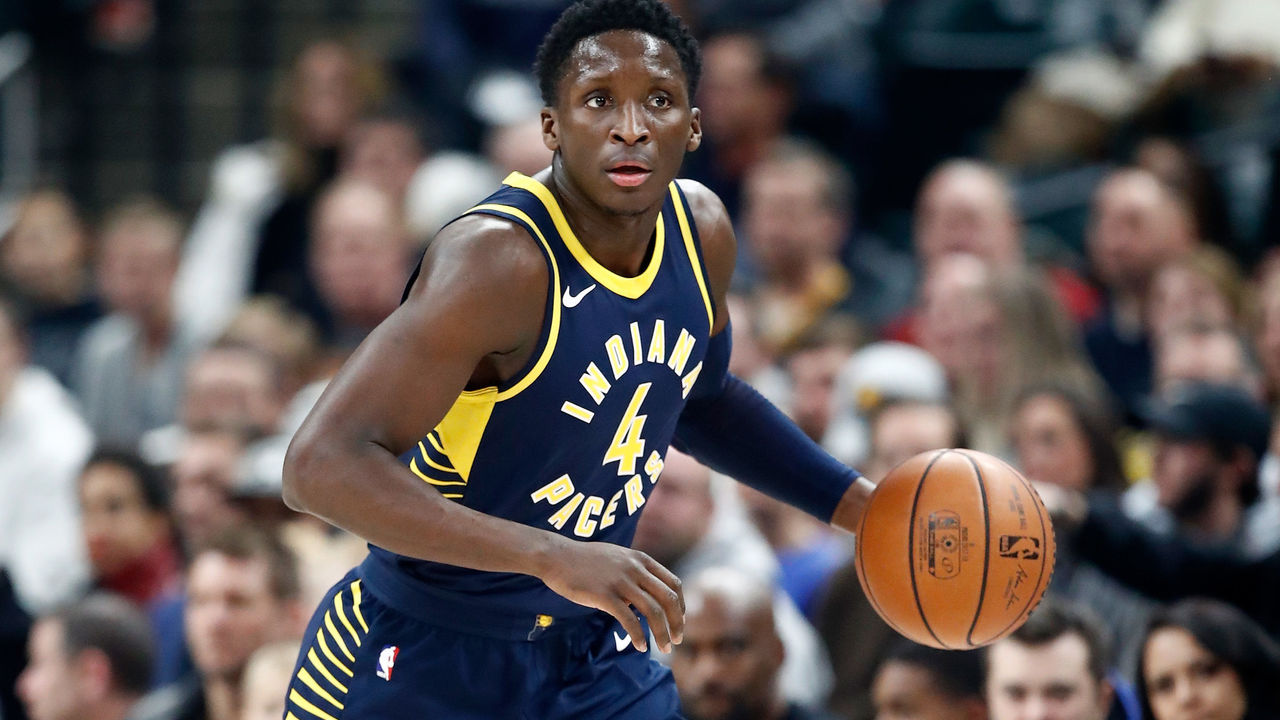Better late than never: 6 players finally realizing their potential
Traditionally, NBA breakout stars follow one of two patterns: the player people knew had potential makes the leap from promising talent to borderline All-Star, or the guy no one expected anything from develops into a reliable contributor.
But, there's a third type that arguably makes for the most interesting story: the once-promising prospect turned journeyman who no longer inspires confidence emerges as an essential part of his team's season.
This year has been full of stories highlighting the afterthought player, who four or five years (and one or two teams) after being drafted is now starting, earning big minutes, and/or playing an important role in his respective team's present and future. Here are six of the most interesting examples:
Shabazz Napier, Portland Trail Blazers

You might have noticed that Portland didn't exactly fall apart when Damian Lillard missed seven games over the last few weeks with hamstring and calf injuries - actually, the Trail Blazers went 5-2 during that span.
Of the many reasons why they were able to produce in his absence, the biggest might've been the superlative play of fourth-year point guard Shabazz Napier, who in those seven substitute starts averaged 19-5-5 on 48 percent shooting from the field (and 42 percent from downtown), leading Portland to wins over the Spurs, Thunder, and Sixers.
Really, Shabazz has been providing all season. After shooting under 40 percent from the field on under five field-goal attempts per game for his first three years, Napier is shooting 48 percent from the field while averaging 21 minutes and nearly 10 points per game this season. He's not just contributing on offense, either: Napier is recording over two steals per 36 minutes and ranks 15th among all point guards in ESPN's Defensive Real Plus-Minus statistic.
It's probably not quite enough to create a point guard controversy in Portland - Lillard means too much to the franchise - but it should be enough to make Napier some considerable money this summer. He'll be a free agent this summer and could be a solid target for a team looking to bolster its backcourt.
E'Twaun Moore, New Orleans Pelicans

Moore was hardly a blue-chip prospect in his early years after being drafted out of Purdue by Boston late in the second round of the 2011 draft. But he's managed to hang around the NBA since, playing 50-plus games in multiple seasons for both the Celtics and Magic before earning spot minutes for the Bulls, all without providing a reason to expect he'd ever be much more than a roster filler.
That's changed since he's arrived in New Orleans, however - particularly this season, where the career 45 percent shooter is shooting 54 percent from the field and 45 percent from deep, averaging a career-high 13.3 points per game (his first year in double digits) in the process.
Of course, playing with two of the game's most dominant big men will help, but of New Orleans' rotation of underwhelming wings, Moore is the only one who has provided the stability the Pelicans' starting lineup needs - and he's locked up for another two seasons at less than $9 million per, a rare semi-bargain contract for the maxed out Pelicans.
Reggie Bullock, Detroit Pistons

A late first-round selection of the Clippers in 2013, Reggie Bullock played minimally for L.A. before being shipped to Phoenix in his second season, where he played even less. After landing in Detroit, Bullock spent two seasons mostly on the bench, but evidently impressed Stan Van Gundy enough to earn another two-year contract last offseason.
The contract turned out to be a tremendous decision. Bullock bounced in and out of the rotation early in the season, but after taking the starting small forward position from Stanley Johnson about a month ago, the UNC product has become a fixture for the Pistons, shooting 52 percent from the field and 42 percent from 3-point range, averaging a career-high eight per contest.
He might not have established himself as the team's long-term small forward yet, but considering they're 11-6 in the 17 games he's started - “It’s pretty clear the more he’s played, the better we’ve been,” SVG told the Detroit Free Press earlier this month - they're probably not sweating the $5 million they're paying him this year and next, combined.
Jeremy Lamb, Charlotte Hornets

It's been almost six years since the James Harden trade, and it's no longer the first thing you think of when you see Jeremy Lamb, the primary return in perhaps the most controversial deal of the decade.
Good thing for Lamb, because in six seasons since, he's done remarkably little to justify the dealing of a perennial MVP candidate, never averaging over 10 points or 20 minutes a game or living up to what seemed like remarkable offensive talent.
This year, well, he's not recasting anyone's opinions of the megadeal - especially since he's moved on to Charlotte - but he's starting to show glimpses of his potential: averaging 14 points per game off the bench on a career-best 55.4 percent true shooting and a 17.6 PER. He's assisting and getting to the line more, and he's not giving it all back on the defensive end.
Not bad, considering three summers ago OKC jettisoned him for a future second-round pick and the ghost of Luke Ridnour.
Spencer Dinwiddie, Brooklyn Nets

In the summer of 2016, former 38th overall pick Spencer Dinwiddie was traded to the Chicago Bulls, waived, re-signed by Chicago, then waived again before the season started.
The 6-foot-6 point guard out of Colorado then signed a three-year deal with Brooklyn that paid peanuts, but, apparently, the guaranteed deal was all the security Dinwiddie needed. After earning regular minutes and sporadic starts for Kenny Atkinson in the 2016-17 season, he's now the veritable leader of a 2017-18 Nets team that's proven to be impressively frisky.
Dinwiddie's numbers - averaging 13 points and six assists a game, with a 17.7 PER - are obviously career bests, and he made headlines for his 31-point performance in a one-point OT loss to the Toronto Raptors. As impressive as his surface stats are, his secondary stats are downright stunning: ESPN ranks Dinwiddie fourth among all point guards in Real Plus-Minus, higher than luminaries Kyle Lowry, Chris Paul, and Kyrie Irving.
His numbers may drop with the return of D'Angelo Russell from injury, but it'll be interesting to see whose stewardship the Nets actually run better under.
Victor Oladipo, Indiana Pacers

Oladipo's example of this phenomenon is so amplified that it feels sort of unfair to put him here.
Nonetheless, the principles are the same: Oladipo was a second overall pick in 2013 and is already on his third team, and though the $84 million extension he signed with Oklahoma City shortly after being traded there two summers ago disqualifies him from technical "journeyman" status, it's also true that in the eyes of most NBA experts, he was already a known quantity, unlikely to break out or improve significantly.
Unfortunately for those experts, this is exactly what Oladipo has done since being dealt to Indiana - from contract net negative to likely All-Star and even down-ballot MVP candidate. His value runs deep in Indiana, considering how they played in the four games he missed with a knee injury (all losses).
The Indiana alum is suddenly averaging 25-5-4, shooting 49 percent from the field and 41 percent from deep (career bests) while leading the Pacers to playoff contention, a team nearly everyone targeted for the lottery this summer.
(Photos courtesy: Getty Images)